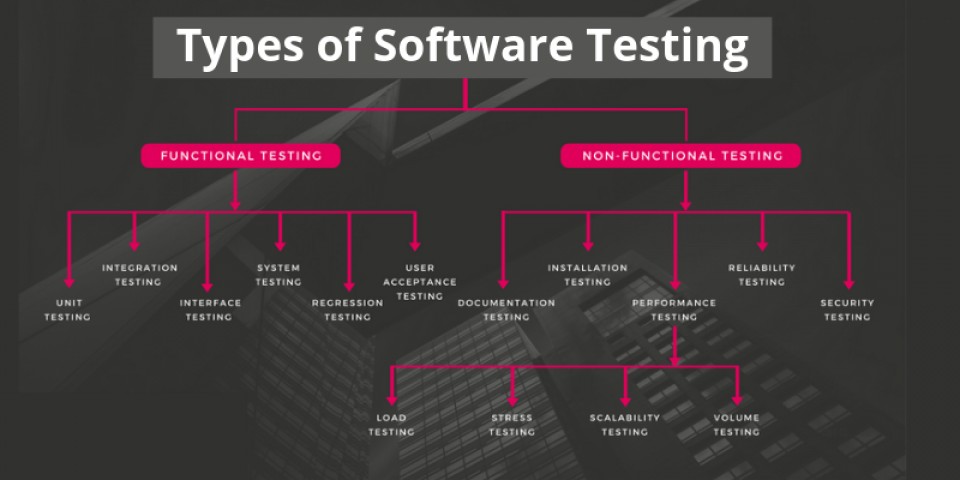So already learnt Software Testing and think that’s enough? Completing a software project is not sufficient. As we also need to test it. But now the question arises exactly why should we care about testing a software application?
Since software testing is about checking if the software is functioning properly? And if it meets the written requirements specifications.
So, the basic goals of software tests are to get rid of bugs and to enhance various aspects of the software, such as- user experience, performance, security, and so on. Therefore, a great deal of testing can amazingly improve the overall quality of the software. Thus, which leads to great customer satisfaction.
Is software testing vital? But what if we don’t do this?
Nowadays, software applications are used everywhere be it hospital, traffic, shops, business organizations, etc. So, it’s dangerous to not test the software at all. It’s dangerous in the sense that it can cause severe harm, such as- loss of money, security breach, and even deaths in some cases. Therefore, delivering or launching an application without testing it very well will cause many small or big problems for the users.
What are the types of Software Testing?
Software testing is mainly classified into two main broad categories they are- functional testing and non-functional testing. Also, there is another general type of testing called maintenance testing.
1. Functional Testing
This involves the testing of the functional aspects of a software application. So, when you’re performing functional tests, you have to test each and every functionality. Therefore, you need to see whether you’re getting the desired results or not.
Several types of functional testing, such as:
- Unit testing
- Integration testing
- End-to-end testing
- Smoke testing
- Sanity testing
- Regression testing
- Acceptance testing
- White box testing
- Black box testing
- Interface testing
Also, functional tests are performed both manually and with the use of automation tools. For this kind of testing, manual testing is easy, but you should use tools whenever required.
Some tools that you can use for functional testing are Micro Focus UFT (previously known as QTP, and UFT stands for Unified Functional Testing), Selenium, JUnit, soapUI, Watir, etc.
2. Non-functional Testing
It is the testing of non-functional aspects of an application, such as- usability, performance, reliability, security, and so on. Non-functional tests are performed post the functional tests.
You can improve your software’s quality to a great extent with Non-Functional Testing. As, functional tests also improve the quality, but with this non-functional test, you have the opportunity to make your software even better. This allows you to polish the software. This kind of testing is not about the functionality of the Software. Rather, it’s all about how well the software runs, and many other things.
Non-functional tests are not generally run manually. In fact, it’s tough to perform this kind of tests manually. So, these tests are usually executed using tools.
Several types of non-functional testing, such as:
- Performance testing
- Security testing
- Load testing
- Failover testing
- Compatibility testing
- Usability testing
- Scalability testing
- Volume testing
- Stress testing
- Maintainability testing
- Compliance testing
- Efficiency testing
- Reliability testing
- Endurance testing
- Disaster recovery testing
- Localization testing
- Internationalization testing
So, let’s understand what the different software testing type holds-
Different Types of Software Testing
1. Unit Testing
To test each and every component or module of your software project is known as unit testing. As, the knowledge of programming is necessary to perform this kind of testing. So only programmers perform such tests, and not the testers.
Therefore, you have to do a great deal of unit testing. As you should test each and every unit of code in your project.
2. Integration Testing
So, right after integrating the modules, you need to see if the combined modules work together or not. Therefore, this type of testing is named as integration testing. However, you need to perform fewer integration tests than unit tests.
Some good tools for unit and integration testing are Jasmine, Mocha, etc.
3. End-to-end Testing
This is the functional testing of the entire software system. So, when you test the complete software system, such testing is called end-to-end testing. While, you need to perform fewer end-to-end tests than integration tests.
Cucumber, Protractor, Jasmine, Karma, etc. are some great end-to-end testing tools.
4. User Interface Testing
This involves the testing of the application’s user interface. Since the aim of UI tests is to check whether the user interfaces have been developed according to what is described in the requirements specifications document. Therefore, by running UI tests, you can make the application’s user interfaces more user-friendly and appealing to the eyes.
Some of the great automated user interface testing tools are Monkey test for Android, Protractor, and Saucelabs.
5. Accessibility testing
Whether your software is accessible to differently abled people or not this testing type is termed as accessible testing. For this type of tests, you need to check if differently abled people such as those who are colour blind, blind, and deaf can access your application.
The right choice of colour and contrast need to be made to make your software accessible to colour-blind people.
6. Alpha testing
To look for all the errors and issues in the entire software Alpha Testing is the cure. This kind of test is done at the last phase of app development. And to ensure that the user/client gets an error-free software application. This is performed at the place of the developers, before launching the product or before delivering it to the client
Since alpha testing is run before the beta testing, which means that after performing alpha testing, you need to run beta testing.
Alpha testing is not performed in the real environment. Rather, this kind of tests is done by creating a virtual environment that resembles a real environment.
7. Beta testing
As already discussed, beta testing takes place immediately after alpha testing. Therefore, beta testing is done before the launch of the product. In order to be certain that the software is completely error-free and it functions smoothly. It is carried out in a real user environment by a limited number of actual customers or users. And after collecting feedback and constructive criticism from those users, some changes are made to make the software better.
So, till the time software is under beta testing, it is called beta version of the software. After this testing is complete, the software is released to the public.
8. Ad-hoc testing
Just like its name this testing is a kind of testing that is performed in an ad-hoc manner, i.e. without using any test cases, documentation, plans, or systems. So, unlike all other types of testing, this kind of testing is not carried out in a systematic manner.
Finding errors can be difficult without using test cases. As, there are technical issues that are easily detected through an ad-hoc test. But are hard to find through other testing approaches that use test cases.
Therefore, this informal type of software testing can be executed by any person involved with the project.
9. Compatibility testing
This testing type checks the software compatibility with different operating systems, web browsers, network environments, hardware, and so on. As it checks whether the developed software application is working fine with different configurations.
10. Backward compatibility testing
This is carried out to test if a brand new or an updated version of an application is compatible with the previous versions of the environments on which the software runs. Sometimes, to match the standard and style of a newer, more modern environment some application is updated specifically. So in that case, support for backward compatibility is necessary.
Backward compatibility testing ensures that all those who are using the older versions of a particular environment can use your software.
11. Browser compatibility testing
Like its name this checks a web application for its browser compatibility. More specifically, it is tested whether the web app can easily be accessed from all versions of the major web browsers.
However, it is a specific form of compatibility testing, while compatibility testing checks for general compatibility.
Some of the famous tools to check browser compatibility include CrossBrowserTesting.com, LamdaTest, Browsershots, Experitest, Turbo Browser Sandbox, Ranorex Studio, Browsera, etc.
12. Performance testing
To check if the software’s performance is good or not performance tests are run. There are performance testing tools that analyze your app’s performance and show you the performance issues. So, by fixing those issues, you’ll be able to increase the performance of your software application. Some great performance testing tools, also known as load testing tools, for web applications are WebLOAD, LoadView, NeoLoad, LoadNinja, Appvance, LoadRunner, Apache JMeter, Loadster, LoadImpact, Testing Anywhere, Tricentis Flood, SmartMeter.io, Rational Performance Tester, LoadComplete, etc.
13. Load testing
This is a kind of performance testing that tests like how much load a system can take before the software performance begins to degrade.

So, running load tests, we can know about the capacity of taking load of a system.
You can run load tests by using tools such as: LoadRunner, WebLoad, JMeter, etc.
14. Recovery testing
Recovery testing involves the checking of whether the application can recover from crashes and how well it recovers. In this kind of tests, testers analyse and observe that how well the software can come back to the normal flow of execution. Crashes can happen anytime. Even if your software is of exceptional quality, crashes may happen. You don’t know when they may take place and annoy the users.
So, you have to implement mechanisms that will recover the software application quickly and that will make the application run smoothly again.
15. Regression testing
If you need to make changes in any component, module, or function, you have to see if the whole system functions properly after those modifications. Thus, testing of the whole system after such modifications is known as regression testing.
16. Agile testing
Agile testing is a type of testing that is conducted according to the rules of agile methodology, So, only carried out by the QA Team. However such testing is done from the actual customers’ viewpoint.
Some of the useful tools that you can use for Agile testing are JIRA, PractiTest, JunoOne, VersionOne, TestRail, SoapUI, etc.
17. API testing
Alike unit testing, API testing is also a code-level testing type. The basic difference between unit testing and API testing is that unit testing is performed by the development team whereas API testing is handled by the QA team.
18. Black box testing
Performed by the QA team of a company, black box testing is a testing technique that involves the checking of the application’s functionality without having any technical knowledge of the application, like the knowledge of the code’s logic, how the code works, knowledge of the internal structure, etc.
19. White box testing
Performed by the development team, white box testing is a testing method that requires a good understanding of the application’s code. It requires great knowledge of the app’s internal logic.
20. Security testing
to ensure the security of your application security tests are performed. Therefore, in order to prevent the security breaches. Therefore, security experts run this kind of tests to see how much your software is secure from attacks. And locate security issues so that the security of the app can be strengthened.
The top website security testing tools include Grabber, Arachni, Iron Wasp, Nogotofail, SQLMap, W3af, Wapiti, Wfuzz, Zed Attack Proxy, etc.
21. Usability testing
Testing the user-friendliness of an app is known as usability testing. Since, it involves the checking of how much usable or user-friendly the app is. Therefore, it is tested whether any user can easily use your software without getting stuck.
So, one of the best ways to test the usability of your software is to invite a few people to use your software. See if they can do certain things in your app without taking any help from you.
Take a look at these useful usability testing tools: Optimizely, Qualaroo, Crazy Egg, Usabilla, Clicktale, Five Second Test, Chalkmark.
22. Scalability testing
This verifies the scalability of the software i.e. whether that’s scalable or not. Thus, it checks if your app performs well when the number of users, amount of data, or the number of transactions increases significantly. This is because, software application that’s not scalable may cause great business loss.
23. Reliability testing
It is a type of software testing that verifies the reliability of the software, i.e. if the software is reliable or not. To put in other words, it checks whether the software runs error-free and that one can rely on it.
For example, if a user’s important information stored in the database of the software gets suddenly deleted after a few months because of some error in the code, we can say that the software is not reliable.
24. Acceptance testing
The client who will purchase your software will perform acceptance testing (also known as User Acceptance Testing) to see if the software can be accepted or not by checking whether your software meets all the client’s requirements and preferences.
So, if your software doesn’t meet all the requirements or if your client doesn’t like something in the app. Then they may request you to make changes before accepting the project.
Final words
We have already discussed a detailed list of Testing types. So, it doesn’t mean you need to perform each and every above listed test. As it totally depends on your project’s requirements such as what kind of tests you should run depends on the nature of software you’re building and also other factors.
Besides performing tests, measuring the effectiveness of the tests is also important, and test coverage tells the effectiveness of your tests. There are many tools which are good for measuring test coverage, used for JavaScript software projects.
You can learn the different testing types with the available certification courses. As there many available in the market you can decide the best as per your requirements and become a Certified Professional.




